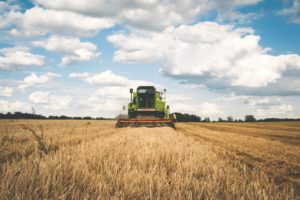As a professional farmer or rancher, your attention gets pulled in multiple directions on a constant basis. The self-sufficient life you have chosen for yourself and your family demands daily maintenance and perseverance. The work needed to maintain your buildings will wear down the equipment you utilize.
Whether it’s the tractor or tilling machine you use for your fields or the forklift or truck you use for transport and all-around heavy labor, there’s no such thing as everlasting machinery. While there are precautions you can take to make your heavy machinery last a long time, eventually, replacements will become necessary. During tax season these various expenses and possible write-offs will need explaining.
What Is Depreciation?
Depreciation refers to the value of an object or piece of property that someone uses over a period of time. It can also serve as a broad barometer to measure wear and tear on a type of equipment or property. The analysis of depreciation helps reduce tax liability, which for a farmer can positively affect your annual tax bill.
Depreciation for Machinery
If you, as a professional farmer, rancher or homesteader, include the depreciation of your equipment in your finances and frame your budget properly for a positive bottom line, you will ensure you end up with a large enough tax return to cover heavy equipment replacements as needed. However, there’s a major caveat with this plan. Heavy machinery does not depreciate at the same rate as other pieces of equipment or utilities.
Let’s say you purchased a brand new computer in 2012. It’s entirely possible that by 2018 that piece of equipment has suffered heavy depreciation and requires immediate replacement. Unlike an aesthetic or preferential need, the rate that technology upgrades and changes over time make technological depreciation more rapid.

How Farm Equipment Depreciates
In comparison, farm equipment, land and property, as well as farm buildings, do not necessarily lose their value in the same amount of time. In fact, for farmland and buildings, if you maintain them properly and implement the right type of upgrades, you can negate their depreciation completely. Heavy machinery, on the other hand, can be a different story.
Depending on usage, depreciation can occur over a varying amount of time. When you buy new equipment, the heavy equipment loses 20 to 40 percent of its value in the first year. If you stay vigilant with maintenance, every year that depreciation can slow but the value will inevitably continue to drop.
The Value of Depreciation
This rate of loss of value will show up as a negative line on your balance sheet. If and when you decide to sell that asset, in this case a piece of heavy machinery, a plot of land or a farm building, the amount of depreciation claimed will be reclaimed as something called “recaptured income.”
In this way, depreciation does not necessarily equal “free money,” but it certainly can help in future costs. The IRS and bankers require the use of a standardized depreciation schedule for all to use.
This is in addition to the various sections of the IRS tax code that unify the process and outline the benefits available to agriculturalists. For example, under Section 179, a farmer can increase the tax implications of a purchase by deducting the full purchase of equipment or property in the first tax year.
Overall Benefits of Buying Your Own Homesteading Equipment
These different codes, schedules and measurements allow agriculturalists to benefit from both immediate and long-term tax relief. They also provide manageable tax payments for their properties and utilities. As far as heavy machinery goes, used equipment does not necessarily mean it is less valuable, thanks to the rate of depreciation.
If you can buy your heavy machinery new, then by all means do so. But keep in mind that renting may be a more fiscally responsible option.










